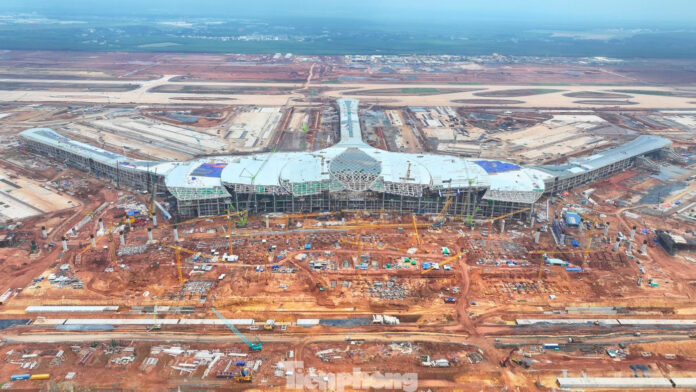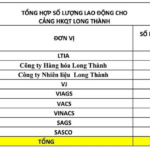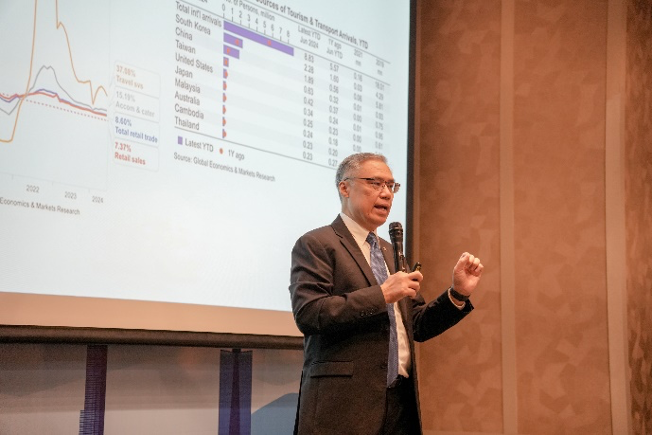Airport Infrastructure Needs Synchronization for Efficient Connectivity
The current road network between Ho Chi Minh City and Dong Nai relies primarily on National Highway 1, National Highway 51, the Ho Chi Minh City – Long Thanh – Dau Day Expressway, and the Cat Lai Ferry. In recent years, these routes have been consistently congested, especially during weekends and holidays. Notably, the An Phu intersection, which serves as the gateway to the expressway, is under construction and often causes traffic jams, impacting the mobility of residents.
To cater to the transportation demands when the Long Thanh International Airport becomes operational, several key infrastructure projects are being accelerated, including the expansion of the Ho Chi Minh City – Long Thanh – Dau Day Expressway and the construction of the An Phu intersection. Simultaneously, several other projects are nearing completion, among which is the Nhon Trach Bridge section of the Ring Road 3.
However, experts caution that if the roads connecting to the airport are not completed in synchronization with the airport’s inauguration, traffic congestion is likely to occur.
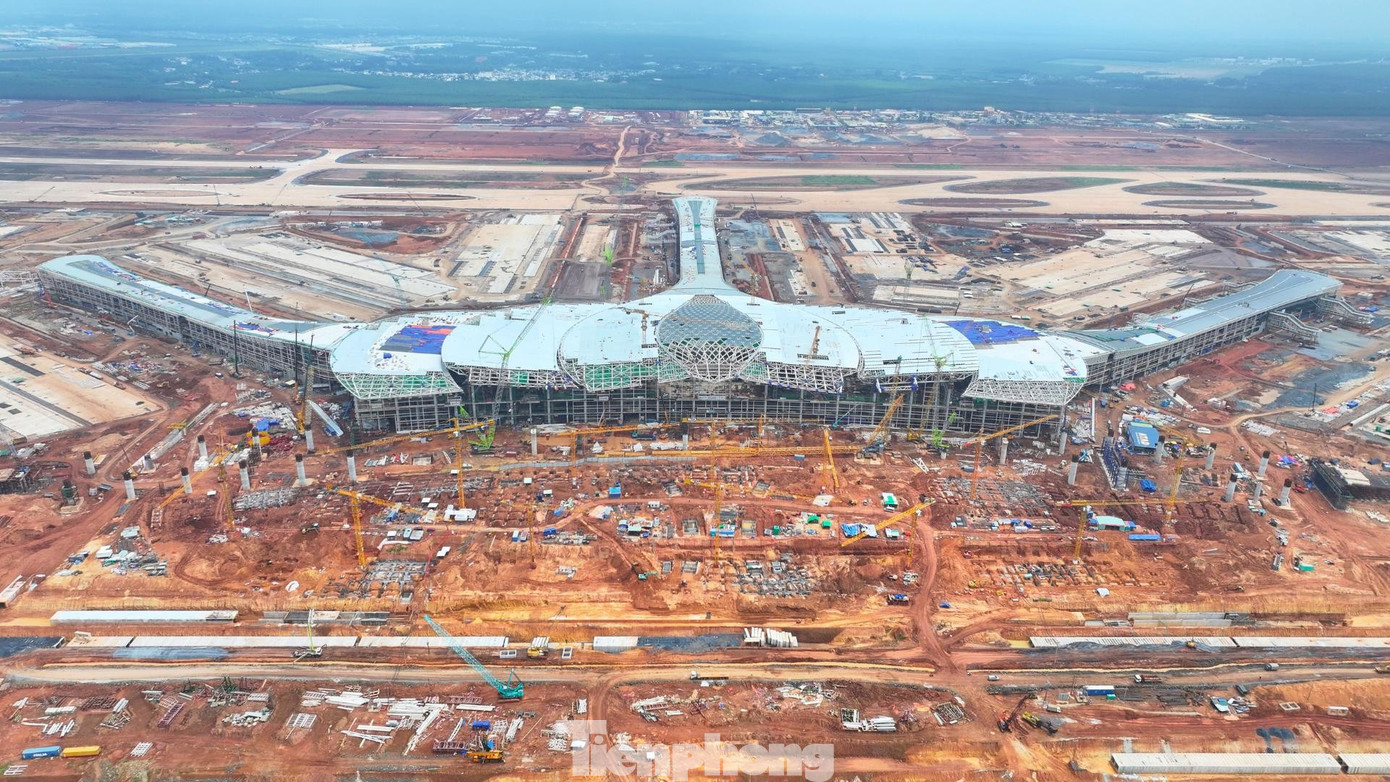
Long Thanh International Airport is in the final stages of completion. Photo: ACV.
Dr. Ngo Viet Nam Son, an urban planning expert, emphasizes that airport planning is just the beginning, and the crucial aspect is executing the plan in a synchronized and sustainable manner.
“We have encountered instances where bridges were built without access roads, and ports were constructed without connective routes, rendering the projects inefficient. With Long Thanh, a similar risk looms if the airport is completed while the supporting infrastructure remains unfinished,” warns Mr. Son.
According to Mr. Son, the construction of Long Thanh International Airport should be intrinsically linked to the development of ring roads, expressways, radial roads, metro and railway systems, and logistics networks connecting the region. Upon the airport’s inauguration, this entire infrastructure network must be ready for operation to prevent congestion, disruptions in transportation, and diminished investment returns.
The expert underscores that expediting the progress of Long Thanh Airport is currently detached from the plan for implementing connective infrastructure. “The airport is like running on its own, while the upgrade, expansion, and construction of connective routes are separate projects with different timelines,” says Mr. Son. He emphasizes the need to view Long Thanh as part of a comprehensive cluster of projects with a synchronized completion timeline for each phase.
Additionally, Mr. Son cautions against the risk of transferring all international flights from Tan Son Nhat to Long Thanh when the connective infrastructure is not fully developed.
“The Long Thanh – Dau Giay Expressway is currently prone to frequent congestion. If we rush the relocation, operating the Long Thanh Airport will encounter significant challenges, leading to negative economic implications,” explains Mr. Son. He adds that metro or railway projects connecting Ho Chi Minh City and Long Thanh will require a minimum of five years for completion. This implies that, in the near future, these modes of transportation will not be available when the airport becomes operational. Therefore, it is imperative to accelerate the progress of expressway, ring road, and direct airport connection projects.
Concern About Hours-Long Traffic Standstills
Mr. Bui Van Quan, Chairman of the Ho Chi Minh City Goods Transport Association, points out that for a long time, Dong Nai, Binh Duong, and Ba Ria – Vung Tau (formerly known as the South Eastern region) have been significant industrial, service, and maritime centers in Southern Vietnam. However, the connectivity between these provinces and Ho Chi Minh City relies on a few main roads that have been congested for years.
According to Mr. Quan, a single traffic incident or road construction site can bring countless vehicles to a standstill for hours.
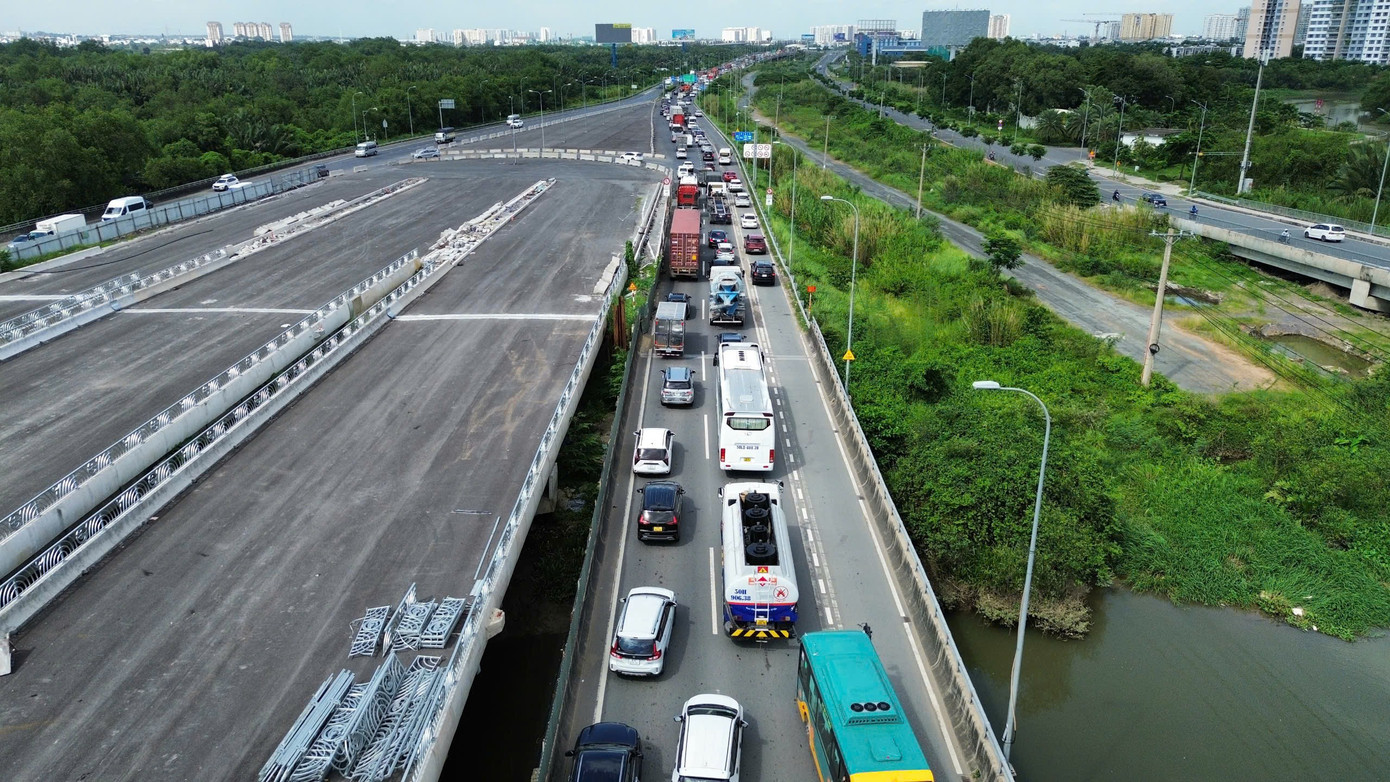
The Ho Chi Minh City – Long Thanh – Dau Day Expressway is about to be expanded. Photo: Huu Huy
Mr. Quan states that traffic congestion significantly impacts businesses, leading to increased logistics costs and reduced profits. Transferring all international flights to Long Thanh Airport carries the potential risk of severe traffic congestion if the connective infrastructure is not completed in synchronization.
“The urgent task is to expedite the progress of expressways, ring roads, and direct connective infrastructure to Long Thanh. Additionally, it is imperative to closely monitor the timelines and proactively address any obstacles to ensure that transportation projects are completed as scheduled,” emphasizes Mr. Quan.
Preventing the Scenario of “One Road Bearing the Burden of the Entire Airport”
Addressing the concern that transferring all international flights to Long Thanh will overload the Ho Chi Minh City – Long Thanh – Dau Day Expressway, the Vietnam Airports Corporation (ACV) assures that the infrastructure plan includes expanding and diversifying access routes to avoid the scenario of “one road bearing the burden of the entire airport.”
According to ACV, the Ho Chi Minh City – Long Thanh – Dau Day Expressway will be upgraded from four to eight to ten lanes, with the addition of emergency lanes and improved intersections. Upon completion, the travel time from Ho Chi Minh City’s center to Long Thanh Airport is expected to be reduced to 40-45 minutes.
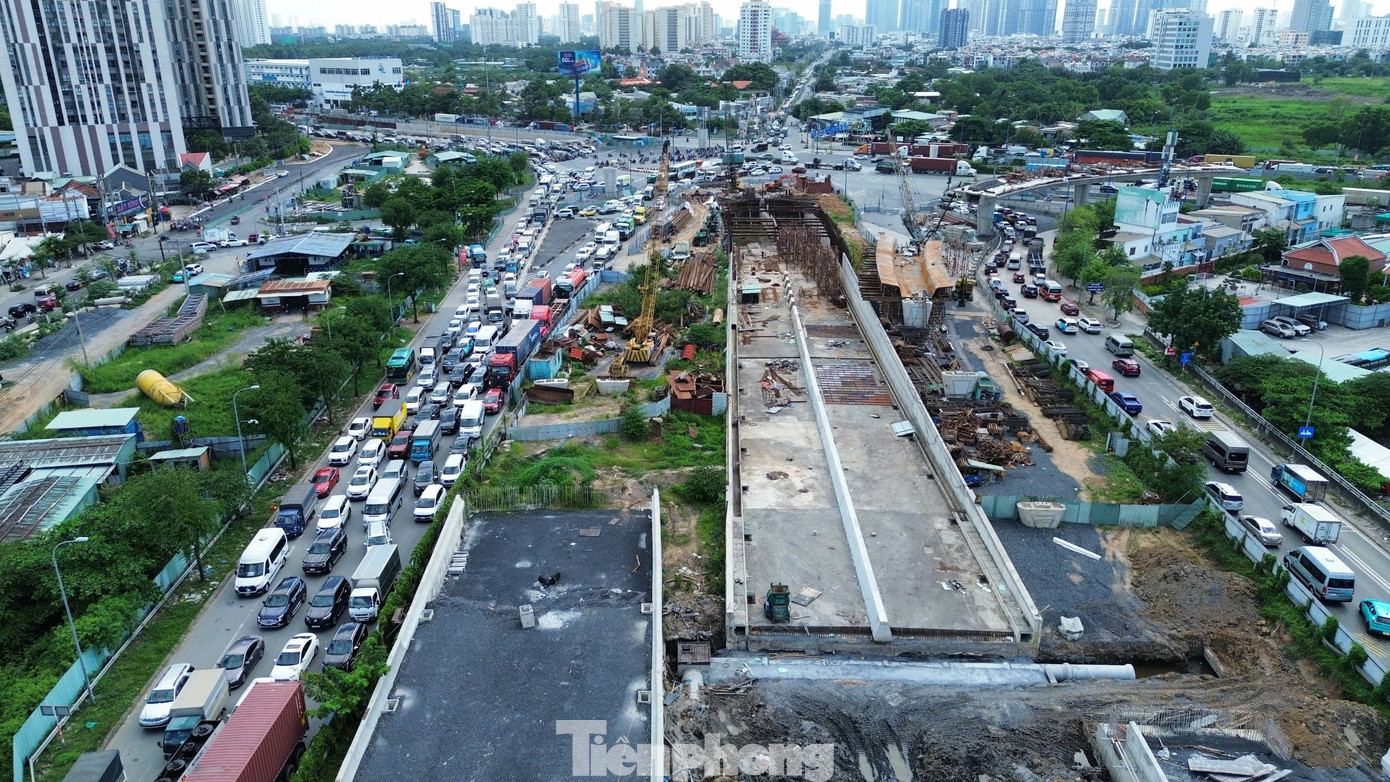
An Phu Traffic Intersection in Ho Chi Minh City – a project connecting to the Ho Chi Minh City – Long Thanh – Dau Day Expressway. Photo: Huu Huy.
Simultaneously, Ring Road 3 will directly connect Binh Duong, Dong Nai, and Long An with the Ho Chi Minh City – Long Thanh – Dau Day Expressway and other expressways. This will enable passengers from these provinces to reach Long Thanh Airport without passing through Ho Chi Minh City’s center.
Furthermore, several new expressways will be established: Bien Hoa – Vung Tau, serving passengers from Ba Ria – Vung Tau and the Cai Mep – Thi Vai port area; Dau Giay – Phan Thiet, connecting the South-Central region; and Ben Luc – Long Thanh, linking the Mekong Delta with Long Thanh Airport and providing an alternative to traveling through Ho Chi Minh City.
Providing Housing Solutions: An Additional 1,000 Social Homes Available, Now Catering to Commuters Traveling Up to 20km
The An Xuyen Ward Social Housing Project in Ca Mau Province is an impressive undertaking, featuring six 12-story blocks comprising nearly 1,000 social housing units. With a total investment of over VND 1,215 billion, this project is set to be completed within 36 months. One unique aspect of this project is Ca Mau’s inclusive eligibility criteria, which allows individuals with existing homes who work more than 20 kilometers away to also purchase these social housing units.
A New Lease of Life in the Heart of Vietnam
As Hanoi stepped into the 21st century, it embraced a dynamic pace, seamlessly blending its rich, ancient soul with modern innovations. The city’s skyline now boasts contemporary structures, a testament to its progressive spirit, while its deep-rooted traditions remain intact, reflecting a unique harmony between the old and the new.

























